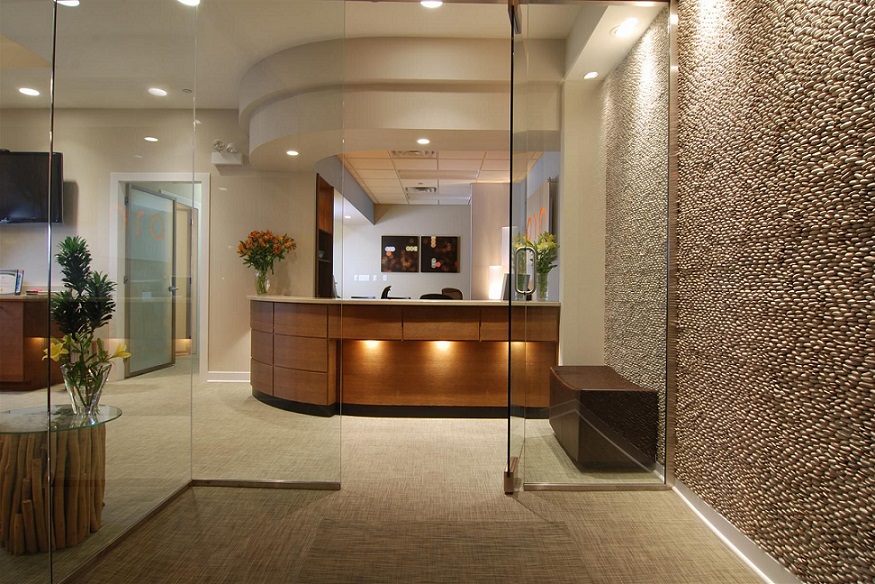Now that we are facing such an unprecedented sanitary crisis, it may be time to ask ourselves how we can make our office space safer, and design strategies to prevent the spread of viruses. This is especially true about lobbies where all visitors pass through once they arrive. Let’s think of features that could reduce the danger of communicable disease inside the workplace.
How to prevent infectious germs from spreading
The lobby should be viewed as the first line of defence in the prevention against infectious germs, and so here are a few considerations to keep in mind while renovating it or building a new one.
USE ANTIMICROBIAL MATERIALS
As health officials advise us to wash our hands often and keep reminding us that the use of hand sanitizers are the best ways to protect against the spread of germs, how about reflecting this idea by using antimicrobial materials? In fact, you don’t even have to wait for renovations; you can simply apply an antimicrobial floor coating to the current material used on the ground of the lobby.
More and more manufacturers today integrate antimicrobial technology inside their products. From faucets to window shades, paint, and door hardware, they all can be coated to protect against bacteria. These materials are already popular in the healthcare sector, which should show that there is a need for it and that it works. After that, all you’ll need to do is place a sign saying “Please don’t shake hands” and you should be fine. Just kidding, of course!
IMPROVE AIR QUALITY
Natural ventilation systems are an efficient way to bring in good air throughout the building while getting rid of the bad one (i.e.: already breathed air). Indoor air pollutants, which include bacteria, build up quickly, so you need to keep it moving. Experts recommend a renewal of air four times per hour. Generally, an office consists of only 25% outside air, which is clearly not enough.
The lobby can easily be isolated and suited to integrate natural ventilation strategies. Doing so, might even make you environmentally friendly by integrating landscape features such as plant walls, which will also organically filter air and breathe oxygen into indoor spaces. While you are at it, make sure to let the sun rays come in, since they are good for the plants and for humans too.
To complete the changes, hands free tools should be integrated so people don’t have to touch too many of the elements in their surroundings. A simple voice activated assistant, interacting with the technology of the building, could go a long way into protecting against bacteria.




